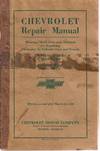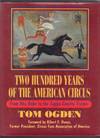
A Remarkable Tenth Century Manuscript from the Cultural Renaissance Brought on by Charlemagne, from an Early Collectarium: This manuscript comes a century before the Norman Invasion and is potentially contemporary with the founding of the Holy Roman Empire
- Used
- Hardcover
- Signed
- Condition
- See description
- Seller
-
Ardmore, Pennsylvania, United States
Payment Methods Accepted
About This Item
Fine Carolingian manuscript on vellum; this may well be the earliest Collectarium to be offered for sale, and perhaps the sole example of this text from the dawn of literacy and learning in Europe that any collector could hope to acquire.
[video width=""1920"" height=""1080"" mp4=""https://raab-collection-uploads.storage.googleapis.com/wp-content/uploads/20231204130551/Carolingian.mp4""][/video]
The late eighth century saw a new power rising in Europe in the form of the empire of Charlemagne (747-814). Originally from the region of north-eastern France and the adjacent territories of the Low Countries, within a few decades most of Europe from the Channel to the Pyrenees, westwards into much of Germany, and downwards into Italy had fallen under his sway. It is clear that he saw the correct fostering of religion and learning as a vehicle to give this unit a collective identity, remaking the Roman Empire as he saw it out of the fragmented and disparate communities left behind when that power structure fell in the fifth century. The Bible alongside other liturgical books was to be carefully edited and corrected by court theologians, and copies distributed across the realm, ensuring a form of standardization.
One enormous stumbling block to these aspirations was the nature of contemporary script itself. In the so-called ‘Dark Ages’, writing and study had fallen back to just a handful of religious communities and their scriptoria, with each using the scrawling letter forms of late Roman cursive to form their own local scripts, usually barely legible by those outside their communities. Thus, Charlemagne set Alcuin, perhaps his principal court scholar, up as an abbot in Tours, and from there a new script emerged, balancing great legibility with speed to write – this, Carolingian minuscule. From Tours it rapidly spread across Europe, replacing previous scripts everywhere except in Spain (where Visigothic minuscule clung on) and Montecassino (where Beneventan minuscule survived). This new script was the vehicle of the social cohesion of Europe as it clawed its way into the Middle Ages proper. Incidentally, it was also the script that the humanists returned to in the fifteenth century when they were trying to find an alternative to the angular and often messy forms of gothic script, believing that the books written in this were the last Roman ones surviving, and as such was then picked up by early printers and popularized, becoming today the basis of most electronic fonts, including ‘Times New Roman’ (hence the name).
The Collectarium was an important liturgical book in the Early Middle Ages, and was a listing of the Collects – short Latin prayers recited in the Holy Office before the Epistles, Secrets and Post-Communions. The text may have pre-Carolingian origins, but no manuscript has survived, and in fact the oldest manuscript of any Collectarium is the Sankt Gallen MS. 349 of the eighth century, perhaps only a century and a half older than the present example. They were uncommon in the later Middle Ages, having been mostly replaced by other collections of liturgical readings such as Breviaries, and as such are far from common on the open market. The vast Schoenberg database lists only a handful of Collectarium codices as coming to the market in living memory, and none of those older than the fourteenth century. Some notable fragments have appeared, such as the tiny scraps in Beneventan minuscule sold in the Schøyen sale at Bloomsbury Auctions, 8 July 2020, lot 21, but those dating to c. 1200.
This manuscript, dating from the 10th century, perhaps a century before the Norman Invasion into Italy, may well be the earliest Collectarium to be offered for sale, and perhaps the sole example of this text from the dawn of literacy and learning in Europe that any collector could hope to acquire.
Manuscript 10th century, probably France, Single leaf, with single column of 20 lines in later Carolingian minuscule in brown ink, rubrics in orange red, large simple initials in orange-red or brown ink set off in lefthand margin, reused on a later binding and hence with expected folds, stains and small areas of wear, overall in good and solid condition, 360 x 290mm.
Books in this script and from these fundamental centuries often have a simple, yet majestic, elegance. This is the case here. The balance of the script on this page shows instantly the ideal of ease of legibility as well as great beauty. Some forms of letters hark back to the dawn of the Carolingian renaissance, such as the open tailed ‘fish-hook-like’ ‘g’, and the use of the ampersand (called the et-ligature by paleographers) as a letter in its own right for ‘et’ (Latin for ‘and’), within words like ‘etiam’ which here is spelled ‘&tiam’. However, such features are rarer than we would except for the ninth century, and the rotundity and weight of the overall aspect of the letters indicates this leaf was written in the tenth century.
The decorated capitals here echoes this simple elegance of script, and are in uncials, a form of capitals (or majuscules) drawn by the Carolingian scribes tasked with developing this script from Ancient Roman carved stone inscriptions – one can still see the lines more familiar with stone masonry in their crisp sharp edged forms, and nods to their source in the stacking up of smaller letters within other larger ones (these observable most easily today on Roman tombstones).
Reviews
(Log in or Create an Account first!)
Details
- Bookseller
- The Raab Collection
(US)
- Bookseller's Inventory #
- 26630
- Title
- A Remarkable Tenth Century Manuscript from the Cultural Renaissance Brought on by Charlemagne, from an Early Collectarium
- Book Condition
- Used
- Binding
- Hardcover
Terms of Sale
The Raab Collection
10 day return guarantee, with full refund excluding shipping costs for up to 10 days after delivery if an item is returned in original condition
About the Seller
The Raab Collection
About The Raab Collection
Glossary
Some terminology that may be used in this description includes:

